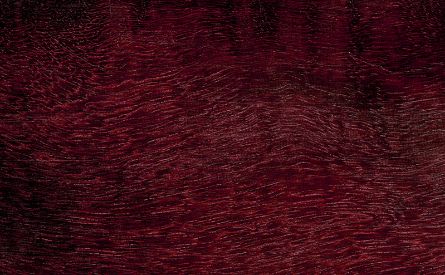CATALOX
Pau Ferro / Swartzia lundellii

Local Names
Mexican Ebony, Pau Ferro, Llora Sangre, Bastard Rosewood, Wamara, Corazon Azul, Naranjillo, Parakusan, Gandoe, Ijzerhart, Alma Negra, Mututy.
Distribution & Tree
Catalox’s natural territory extends from southern Mexico through Costa Rica as well as Cuba. Trees, of medium height, may reach 20m with trunk diameters up to 90 cm. The species is common on limestone hills throughout Peten, Belize and the Yucatan. A red sap exudes when the trunk is cut.
Wood Appearance
Known commercially as Mexican royal ebony or northern rosewood, its heartwood is dark brown, reddish-brown or nearly black with a hint of purple, varying from a solid color to somewhat variegated. Its yellowish sapwood is sharply demarcated from the dark heartwood. Texture very fine to medium; luster usually medium; grain tight and straight.
Processing Properties
The wood may be difficult to work because of its high density, but sands and finishes very smoothly and takes a high polish. Dust irritating to some workers.
Strength & Durability
Heartwood is very resistant to attack by decay fungi and resistant to dry-wood termites. Not resistant to marine borers.
Wood Uses
Inlay, parquet flooring, turnery, furniture, cabinetwork, violin bows, guitars, specialty items, mouldings, decorative veneer, and turnery. An ecological and lower cost substitute for African Gabon Ebony.
Ecological & Social Importance
Its seeds attract a variety of mammals and birds, including monkeys, which are its main propagator. Its yellow flowers are honey producing.
| Reference Species | ||||
| Technical Characteristics | Catalox | Black Locust | Hickory (Shagbark) | |
| Density | kg/m3 | 1,105 | 770 | 800 |
| Janka Hardness | kgf | 1,640 | 771 | 853 |
| Bending Stiffness (Modulus of Elasticity) | GPa | 25.6 | 14.1 | 14.9 |
| Bending Strength (Modulus of Rupture) | MPa | 193.2 | 133.8 | 139.3 |
| Crushing Strength | MPa | 105.1 | 70.3 | 63.5 |
| Shrinkage, Radial | % | 3.9% | 4.6% | 7.0% |
| Shrinkage, Tangential | % | 7.6% | 7.2% | 10.5% |
| Shrinkage, Volumetric | % | 11.2% | 10.2% | 16.7% |
| T/R Ratio | 1.9 | 1.6 | 1.5 | |
| Values determined at 12% humidity - Provided for reference only | ||||
|---|---|---|---|---|
DENSITY
JANKA HARDNESS
BENDING STIFFNESS
BENDING STRENGTH
CRUSHING STRENGTH
SHRINKAGE
Values are for reference only and cannot be guaranteed. Wood is a natural material and physical and mechanical properties may vary depending on age, genetics, and other factors. We encourage customers to consult the references provided in the bibliography. For further explanations of wood’s key technical characteristics, an excellent resource is the Wood Database with articles on Density (average dried weight); Janka hardness; Elastic Modulus; Rupture Modulus; Crushing Strength; Radial, Tangential and Volumetric Shrinkage.






